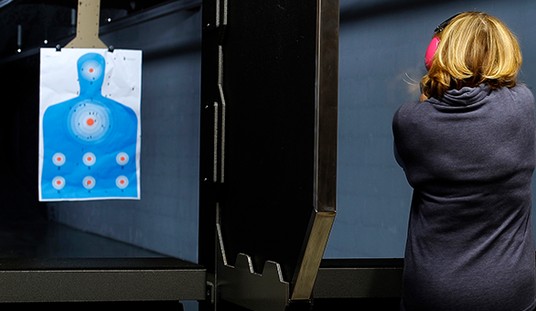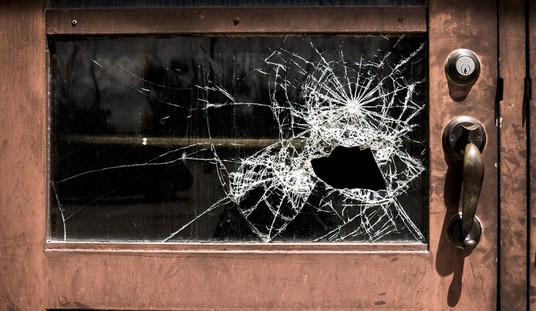The most important criteria in selecting a handgun for self-defense are reliability, reasonably good accuracy, and simple operation. In this context, reliability means that a pistol in good mechanical order, with the appropriate ammunition, will continue to function even when it’s been shot a lot without being cleaned. This does not mean that guns can be left dirty; it simply means that a person who is in constant combat for long periods, or shooting a lot of ammunition, can have confidence their gun will continue to work.
Good accuracy in a combat pistol doesn’t necessarily mean all shots must be in one hole, just that the pistol can consistently hit the target to the owner’s satisfaction. I can almost guarantee that no bad guy shot three times or more in the chest ever looked down and said, "A four inch group? That’s not an accurate gun." Famed western lawman Wyatt Earp said that speed is fine, but accuracy is final. He probably would have thought that a four-inch group in a bad guy’s chest was just fine too. Some pistols, the 1911 design for example, can be made more accurate by a gunsmith reducing the tolerances between certain parts. This is great for shooting paper in competitions, but the downside is that reliability usually suffers and stoppages increase as the pistol becomes dirty from firing.
In a stressful situation like a gunfight, gross motor skills take over from fine motor skills. Guns that are simple to operate and that fit the hand properly, don’t endanger their owners by distracting them from the task at hand: winning a gunfight.
 Generally speaking, most modern handguns meet these criteria most of the time for most people. That’s a pretty vague statement to bet one’s life on in a deadly encounter. No wonder so many people have a desire to customize, personalize, and tweak their personal weapon to make it perform better. But when it comes to customizing a defensive pistol there are some features that should take priority.
Generally speaking, most modern handguns meet these criteria most of the time for most people. That’s a pretty vague statement to bet one’s life on in a deadly encounter. No wonder so many people have a desire to customize, personalize, and tweak their personal weapon to make it perform better. But when it comes to customizing a defensive pistol there are some features that should take priority.
"The two most important things for a defensive handgun are a good trigger, and sights that you can actually see," Robbie Barrkman tells me as we tour the plating room of his company, Robar. Based in Phoenix, Arizona, Robar specializes in building some of the finest custom sniper rifles, combat handguns, and fighting shotguns in the world. The company also does a good trade in reducing, reshaping, and contouring the grips of polymer pistols like Glocks and Springfield Armory SDs to better suit the hands of their owners.
At Robar, they coat firearms and other metal objects in two beautiful, practical, and highly durable proprietary finishes: NP3 and Roguard. But isn’t this article about making practical changes to a defensive pistol to make it more efficient? Sure it is. And making a pistol run smoother, and be easier to keep clean is surely a big step up for any fighting gun.
"We’ve found that plating a gun’s action with NP3 really makes it smooth," Barrkman continues. "Typically, a customer will send us a revolver or a pistol for a smooth trigger and an action job, and we tell them that they should just let us plate it with NP3. Our gunsmiths can certainly do great action jobs, but generally, customers are more than satisfied with the improved trigger once the internal parts have been plated." NP3 is a combination of Electroless Nickel and embedded Teflon. The satin grey, non-reflective finish is extremely durable and highly corrosion resistant with a hardness factor of about 48-51 Rockwell, and it is very slick due to the Teflon particles that are impregnated throughout the host Nickel.
Roguard is a black molybdenum-disulfide based polymer finish that meets the U.S. Military Machine Gun Dry Firing Requirements. This means that after 60 days sea water immersion or 1000 hours salt spray, guns treated with Roguard will still function flawlessly without any lubrication. I’d say that qualification alone meets the requirements of any serious pistolero, but basically it means that Roguard, like NP3, needs just a wipe with an oily rag from time to time, and most importantly, both finishes provide an additional layer of reliability for a firearm, not only because of the inherent lubricity of the finish, but because they don’t attract dirt! As Mike, one of the chemists told me, "Take advantage of this technology and run the guns with no lubricant. Save the three-in-one oil for your bicycle!"
Grip Size Reduction of Polymer Pistols
For some people, a standard, out-of-the-box Glock or Springfield Armory SD is a bit of a handful. The shape and circumference of the grip may not allow the shooter to achieve the correct positioning of the hand, and that can result in greater perceived recoil and shots going wide of the mark. Robar can reshape and reduce the pistol grip to mitigate this problem.
Polymer pistols can benefit from recontouring of the frontstrap and backstrap to suit the owner’s hand size, and the overall length of the grip can be shortened so that, for example, the grip on a full size Glock 17 can be shortened to the length of a compact Glock 19. This improves concealment of the pistol, particularly when carried in an inside the waistband (IWB) holster. It isn’t so much the length of the slide that makes pistols difficult to conceal; it’s the length of the grip. There is the added bonus that shorter magazines will fit in the larger pistol–and in this political climate, who wouldn’t like the option of using, for example, the shorter Glock 19 magazines in a Glock 17 in the same way that 19 owners have been using the longer 17 magazines?
Controlling Recoil
Perceived recoil and muzzle flip, particularly in compact pistols shooting full power ammunition, can be uncomfortable and less accurate for some shooters. Robar offers a high grip modification that undercuts the trigger guard close to the frontstrap to allow the hand to rest slightly higher on the grip. This decreases the distance between the centerline of the barrel and the shooter’s hand, which in turn reduces perceived recoil and muzzle flip. Some shooters naturally point a little bit high when they shoot the Glock, and this modification will bring the front sight into a closer vertical alignment to the target when the pistol is aimed. Finally, the grip is given a stippled effect to provide a non-slip surface. The stippling, which was specially developed by the engineers at Robar, is available in fine, medium or coarse grain to suit all customers.
These modifications are all practical custom techniques intended to improve the shooter’s ability to consistently put shots on target quickly by reducing the distance between the centerline of the bore and the shooter’s hand, to increase reliability by allowing the gun to run cleaner for longer and make cleaning easier, and, in the case of plating the action and trigger, enable almost any rifle, pistol or shotgun to have a better, smoother trigger than the manufacturer typically provides. I was amazed at the smoothness of the actions I tried.
When Enough Is Enough
Some people put a lot of money into customizing their guns with no real plan or expectations. They blur the line between what they want and what they need on their pistol. This may be standard operating procedure for bloated government programs, but for the armed citizen who carries a pistol for practical self-defense, improvements that have the most positive effect are those that enhance the original design, rather than change it. Reliability is paramount, followed by visible sights and a smooth trigger; a grip that improves recoil control and presentation of the piece to the target; durability and concealability. What else could anyone possibly need in a fighting handgun?
Thanks to our friends at the United States Concealed Carry Association for this article. To become an Armed American, click here.








Join the conversation as a VIP Member